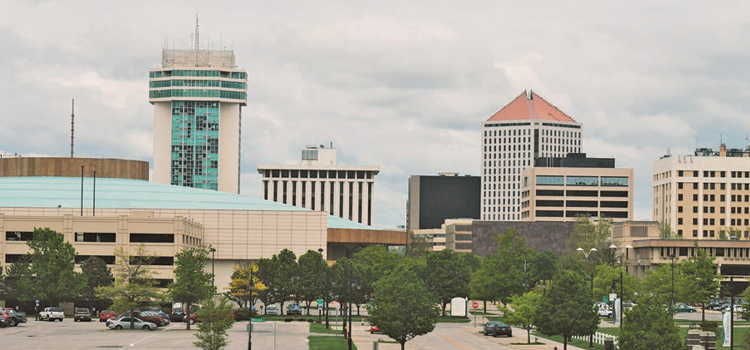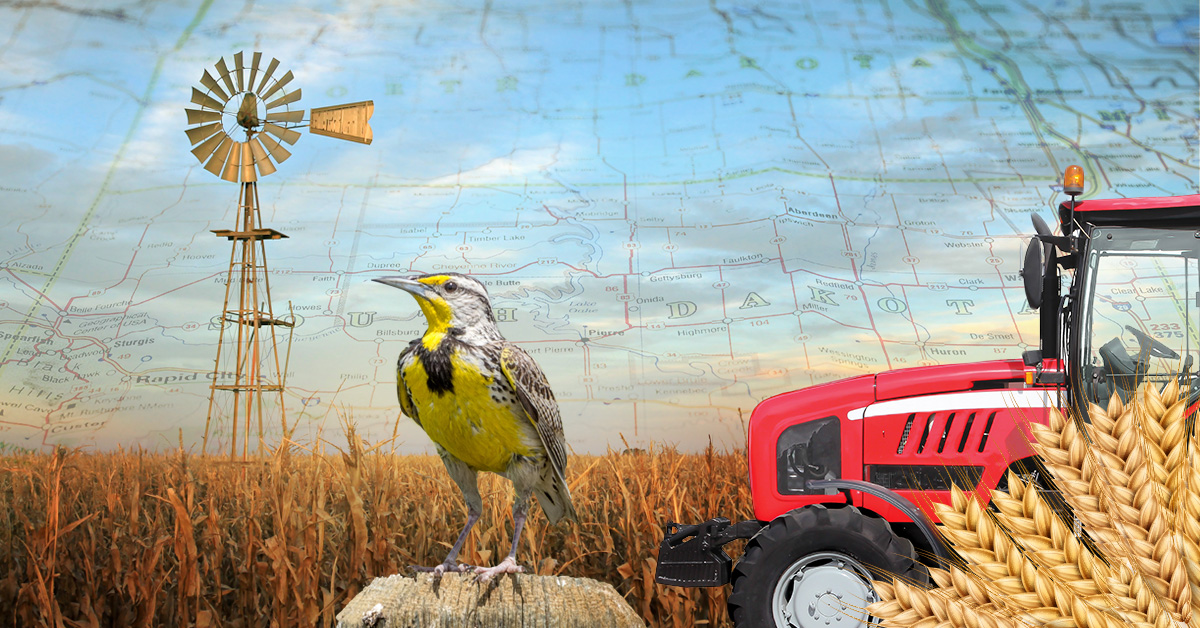The Great Plains region is known as America’s breadbasket due to its tremendous agricultural output. The region is comprised of Iowa, Kansas, Missouri, Nebraska, Oklahoma, North Dakota and South Dakota. The geographic center of the lower 48 states lies in this region near Lebanon, Kansas.
As of third-quarter 2019, the annual gross domestic product (GDP) growth for these seven states was generally lower than the U.S. average of 2.1%. Missouri, Nebraska and Kansas, however, exceeded the national GDP growth rate at that time. Missouri posted the region’s highest annualized GDP growth in the third quarter of last year at 2.4%, while North Dakota had the lowest rate in the region at 1.1%.

The unemployment rates in each of these seven states were slightly lower than the U.S. average of 3.5% as of November 2019, although median annual wages in all seven states also were lower than the U.S. median wage of $51,960 in May 2018. South Dakota had the region’s lowest median wage at that time ($41,800), whereas oil-rich North Dakota topped the region at $49,620.
Missouri has the largest economy in the region as well as the two largest metro areas in St. Louis and Kansas City. St. Louis, in particular, has seen a surge of commercial real estate development in the city limits. Other notable Great Plains cities include Omaha, Nebraska; Oklahoma City; Wichita, Kansas; and Des Moines, Iowa. With 6.1 million residents as of this past July, Missouri was much larger than the region’s second most-populous state, Oklahoma, which has about 4 million residents. Missouri’s GDP of $323 billion also is significantly larger than any other state in the region.
Last year, most of the Great Plains states scored in the upper half of the nation in the annual Best States rankings from U.S. News & World Report, which evaluates factors such as quality of life, infrastructure, economy and fiscal stability. The lone exceptions were Missouri and Oklahoma, which ranked 28th and 43rd, respectively, on the 2019 list.
Although farming is a major part of the economies of the Great Plains states, each state has a mix of economic drivers. Missouri’s aerospace industry, for example, is a major employer and is led by Boeing Co.’s manufacturing plant in north St. Louis. Aerospace and airplane manufacturing also is an important part of the Kansas economy.
Meanwhile, manufacturing is the top industry in Iowa, accounting for roughly 18% of the state’s GDP and about 213,000 jobs. Nebraska is home to Warren Buffett’s financial holding company, Berkshire Hathaway, which has been based in the same office building on Farnam Street in Omaha for nearly 60 years. Oklahoma and North Dakota are oil-reliant states, while South Dakota’s farming economy is supplemented by tourism to its many national parks and monuments, including Mount Rushmore.
Omaha Office Market
The Omaha office market performed solidly through the first three quarters of 2019, particularly for high-demand Class A properties, according to Cushman & Wakefield.

Rents for Class A properties rose by 2.16 percentage points year over year in the past third quarter while the vacancy rate for these spaces was only 4.4%. Omaha’s overall office vacancy rate at that time inched up year over year by 20 basis points to 6.1%. Rents, however, increased annually by 57 cents per square foot to $21.33.
The Omaha market has been driven by strong employment and a shortage of leasing options, Cushman & Wakefield reported. About 430,000 square feet of new office space was expected for delivery in fourth-quarter 2019, however, and another 1 million square feet was projected to come online this year. Many of the new arrivals are of the Class A variety and Cushman & Wakefield projected that vacancy rates may rise as space becomes available.
Focus: Agriculture
A strong agricultural tradition is common to all seven states in the Great Plains region. Nebraska and Iowa together produce more than a quarter of the corn sold in the U.S. Kansas produces 15% of the nation’s wheat, based on cash receipts reported by the U.S. Department of Agriculture. These seven states also produce nearly half of the cattle sold in the country.
Other major crops and commodities of this region include soybeans, hogs and broilers. In Kansas, agriculture is the largest economic driver with a value of about $65.7 billion in 2017, according to the Kansas Department of Agriculture. In Nebraska, there are more than 46,000 farms and ranches spread across 45 million acres, representing 92% of the state’s land area.
What The Locals Say
“Over the last three years or so, we’ve seen about 5,000 multifamily units added to the city of St. Louis. You’re seeing cap rates over the last three to five years compress on the multifamily side, and for office, retail and all product types, but particularly multifamily and mixed-use projects. Prices [for multifamily assets] are going up, rents are increasing year over year by between 3% and 5%, and concessions are very low at 1% or below. The whole market is on fire. It’s kind of one of those situations where if you build it, they will come. And that is not just from the renter’s perspective, but also the institutional investor’s perspective.”
 Kyle Howerton
Kyle Howerton
Senior vice president, George Smith Partners
3 Cities to Watch
Oklahoma City

Oklahoma’s capital and largest city saw an economic upswing in 2018, adding nearly 16,000 jobs in the metro area, according to the Greater Oklahoma City Chamber. Its largest jobs gain in 2018 occurred in the oil and gas sector. Oklahoma City also is home to the largest stocker and feeder cattle market in the world, located in historic Stockyards City.
Des Moines

Iowa’s state capital has a metro-area population of about 655,000 people. Des Moines has long been a hub for the insurance industry. Over the past 15 years, however, the city has transformed into “one of the richest, most vibrant, and, yes, hip cities in the country,” with vibrant local arts and a newly revived downtown core, according to Politico Magazine. Des Moines had the 58th-largest metro-area economy in the U.S. last year.
Wichita

Located in south-central Kansas, Wichita is the largest city in the state with a metro-area population of about 390,000 people, according to the World Population Review. The city was initially a cattle-drive destination but grew into a manufacturing hub for airplanes and aviation equipment. Wichita remains the home base for Spirit AeroSystems, which makes fuselages and other major components for Boeing and Airbus airliners.
Sources: Associated Press, Business Insider, Cushman & Wakefield, Forbes, Greater Oklahoma City Chamber, Iowa Area Development Group, Iowa Economic Development Authority, Kansas Department of Agriculture, Kansas Department of Commerce, Oklahoma National Stockyards, Omaha World Herald, Politico Magazine, The United States Conference of Mayors, U.S. Bureau of Economic Analysis, U.S. Bureau of Labor Statistics, U.S. Census Bureau, U.S. Department of Agriculture, U.S. Department of Labor, U.S. Energy Information Administration, U.S. News & World Report, St. Louis Post-Dispatch, World Population Review






